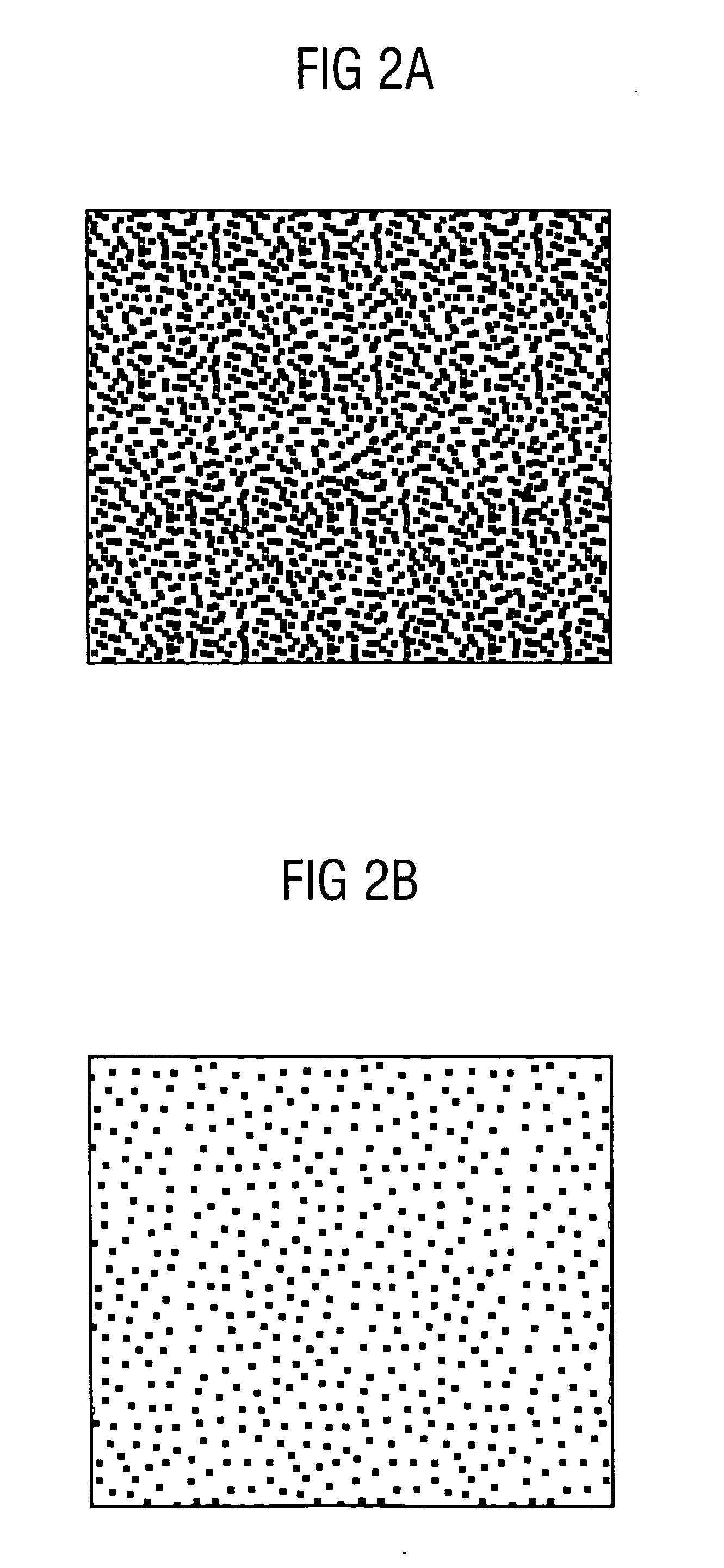Non-volatile, resistive memory cell based on metal oxide nanoparticles, process for manufacturing the same and memory cell arrangement of the same
- Summary
- Abstract
- Description
- Claims
- Application Information
AI Technical Summary
Benefits of technology
Problems solved by technology
Method used
Image
Examples
Embodiment Construction
[0039]FIG. 1 illustrates a memory element S. Two nanoparticles 10 of, for example, NiO1-x are embedded in an isolating matrix 11 of a dielectric. The nanoparticles 10 contact a bottom contact 9 via contact locations K1 and a top contact 12 via contact locations K2.
[0040]FIGS. 2a and 2b illustrate a nanoparticle structure with a particle size of 2.9 nm and 7.9 nm, respectively, manufactured in accordance with the embodiment.
[0041]FIG. 3 shows a NiO1-x nanoparticle 10 in an isolating matrix 11 without (left) and with (right) conductive filament. The nanoparticle is contacted by the bottom electrode 9 and the top electrode 12.
[0042]FIGS. 4 and 5 illustrate the configuration of a memory element array. FIG. 4 shows a top view of a memory element array. Word lines 9-1, 9-2 and 9-3 as well as bit lines 12-1, 12-2 and 12-3 are arranged on a substrate 1 made of e.g. silicon. An isolating matrix 11 in which nanoparticles are embedded is arranged between the word lines and the bit lines. Th...
PUM
 Login to View More
Login to View More Abstract
Description
Claims
Application Information
 Login to View More
Login to View More - R&D
- Intellectual Property
- Life Sciences
- Materials
- Tech Scout
- Unparalleled Data Quality
- Higher Quality Content
- 60% Fewer Hallucinations
Browse by: Latest US Patents, China's latest patents, Technical Efficacy Thesaurus, Application Domain, Technology Topic, Popular Technical Reports.
© 2025 PatSnap. All rights reserved.Legal|Privacy policy|Modern Slavery Act Transparency Statement|Sitemap|About US| Contact US: help@patsnap.com



